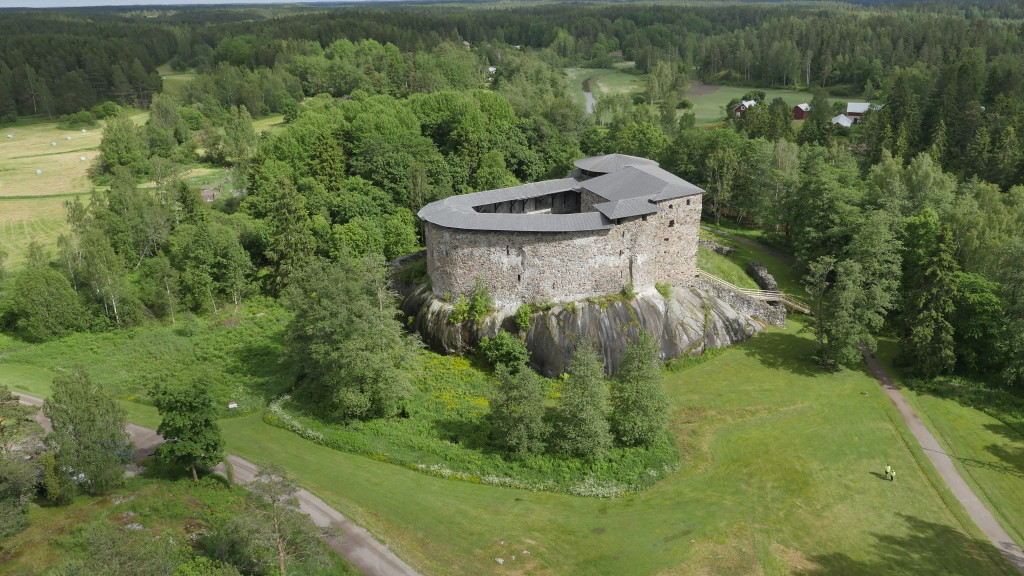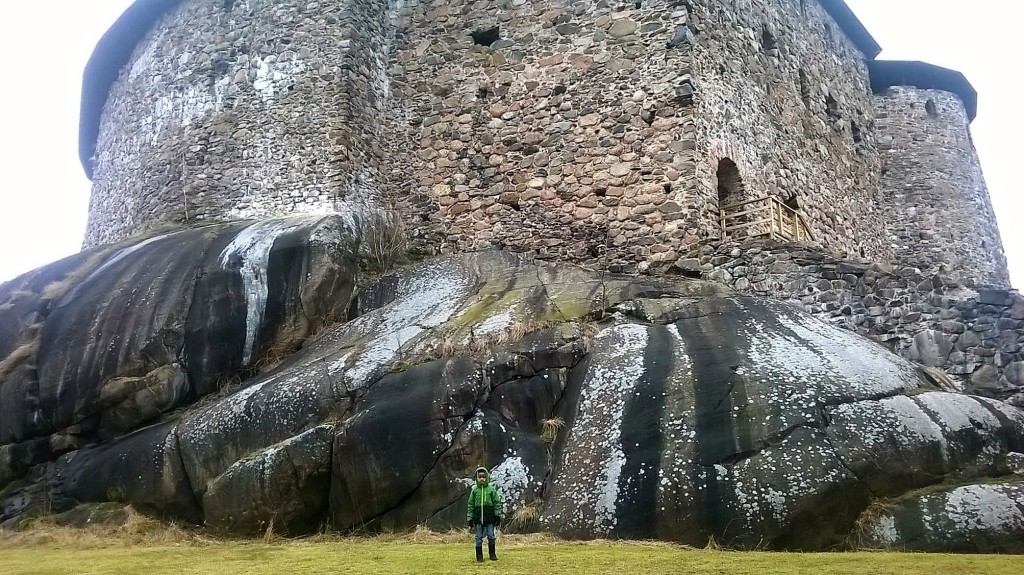Raasepori Castle is situated in Snappertuna in Raasepori. Construction was started by a prominent Swedish nobleman Bo Jonsson Grip. He built the first walls of the castle intending to make the castle a counterpart to the Hanseatic town of Reval (Tallinn, Estonia). In addition to that, the castle functioned both as an administrative center and a military base.
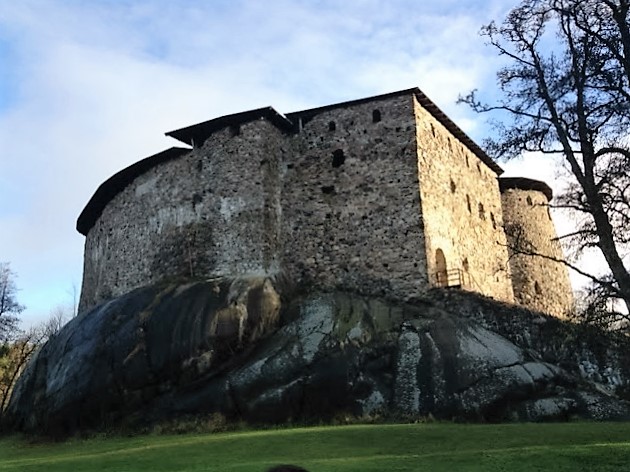
Photo: Metsähallitus / Elias Lahtinen
Historical eras
Raasepori castle was probably built during the 14th century. The first written account mentioning the castle is from the year 1378. Raasepori Castle’s golden age was in the 15th century, but its position weakened rapidly with the establishment of Helsinki and it was abandoned in 1553.
Three years after that, efforts were made to inhabit the castle again, but the armory was empty, since the castle no longer had any defensive role. A couple of years later, the old structures of the castle collapsed which destroyed a beer cellar and the castle was once more abandoned. Thereafter the building was referred as a manor instead of a castle in the records. There are no documents about the everyday life of the castle until the 1540s. A lot of information about what happened during the last years of the castle has been gathered through these documents.
The different stages of Raasepori castle
1370 Construction of the castle begins
1378 First written mention of the castle
1437 Rebels temporarily seize the castle. There are no details of the event
1450–‐1460 Golden Age of Raasepori castle
1521 Danish troops conquer the castle for Christian II, King of Denmark
1523 Troops led by Gustav Vasa reconquer the castle, but the building is damaged in the battle
1520s Gustav Vasa plans to abandon the castle, but it is decided that the castle should nevertheless be restored
1540 Gustav Vasa gives orders that the castle become a property of the Crown, but changes his mind about its use and decides to raise the status of Helsinki as a trading town
In the late 1540s efforts were made to wound down the castle
1553 Raasepori Castle was emptied
In the early 1550s Helsinki was deemed a disappointment and had not succeeded in strengthening trade, so Raasepori Castle was given back its position as an administrative center
1558 The beer cellar collapsed and the castle was abandoned for good
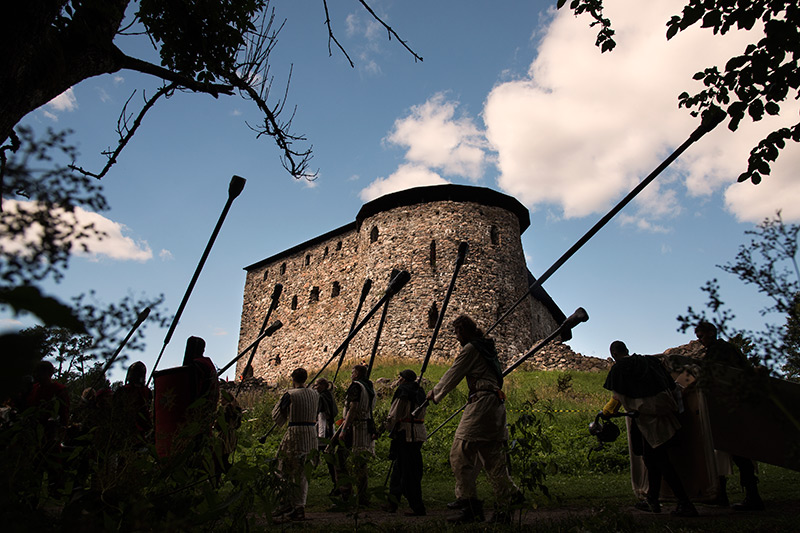
Photo: Metsähallitus / Elias Lahtinen
Tales
According to a tale, three brothers from Sweden arrived on the coast of the province of Uusimaa, Finland, and each of them founded his own castle in Karjaa. (Bo Jonsson) Grip founded Raasepori Castle, and his two brothers respectively founded Grabbacka Castle and Junkarsborg Castle. (Folkwännen nr 35, 31.8.1881)
The governor of Raasepori Castle was Abraham who had a beautiful daughter called Christina. When ex-king Karl Knuttson Bonde who had relinquished the throne earlier, lived in the castle, he fell in love with the governor’s daughter Christina. Finally, on his deathbed, the king married her. (Folkwännen nr 35, 31.8.1881) Christina has also been called the Rose of Raasepori.
King Christian the Tyrant ordered Bishop Hemming Gadd to bring a missive to Raasepori’s new governor, Tile Geseler. When Tile Geseler opened the sealed letter, he read the king’s order which stated that he must behead both the castle’s former governor Nils Eskilsson Banér as well as Bishop Hemming Gadd. Giseler carried out the king’s order and on the 16.12.1520, both the castle’s former governor and Bishop Gadd were executed on the Galgbacken (Gallows Hill) between the castle and vicarage, known also as Gaddens berg. (Wefvar 1879, 22.) According to a tale, Gadd’s head rolled into the river called Slottströmmen and turned into a stone which is known as Gaddens sten (Gadd’s stone).
Suomen Kuvalehti 1874 writes how “one can hear the prisoners’ cries, wails and moans deep down in the cellar and one can see figures wandering in archways and on embankments. One can especially see “A White lady” carrying with her clattering keys; probably she guards the treasures which can be found in the cellar, at least behind a big copper door which is vaguely visible from one corridor. You can also find a large amount of snakes in the castle, holding court, and one of the snakes is bigger than the others and wears a golden crown on his head.
Present-day activities and annual events
The Raasepori Castle ruins are open to tourists from the beginning of May to the end of August. In the castle, it is possible to explore different rooms and in addition to that, there is an observation post. During opening hours, dramatic guided tours and time-travel tours are organized. In the area, you can find The Castle Guard’s Lodge which functions both as a cafeteria and a restaurant. The Castle Guard’s Lodge also offers themed lunches and dinners.
The folk museum Snappertuna Forngård is also situated in Snappertuna village. In the house museum, you can learn what life was like in the 18th and 19th centuries, which is later than the Raasepori Castle period. You can also find the Raasepori Summer Theater right next to the castle.
In the field next to the castle many events are organized throughout the summer. These include midsummer celebrations, markets and concerts, among others.
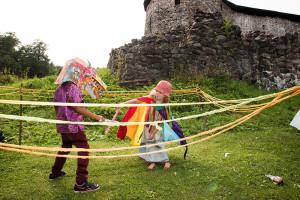
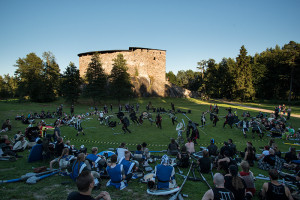
Photos: Metsähallitus / Elias Lahtinen
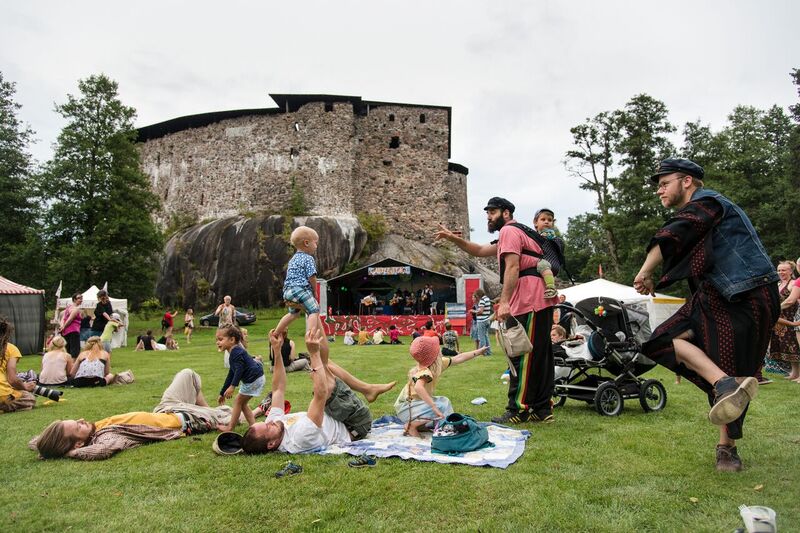
Photo: Metsähallitus / Elias Lahtinen
Photo: Liisa Kyrönseppä



